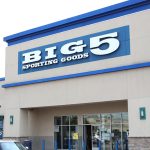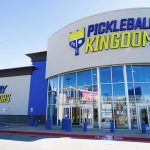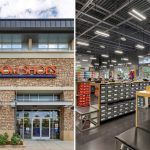A recovering job market and a prolonged foretaste of temperate weather contributed to record growth on the retail front for March, but the majority of the 9.3% improvement came as a result of a calendar shift that placed the Easter weekend within the five-week fiscal March period. The holiday shift — along with the aforementioned factors and ridiculously easy comparisons against dreadful year-ago results — launched industry March comps to the most dramatic growth since March of 1999, which also benefitted from a similar calendar shift. While analysts estimate the calendar-shift swung comps an estimated 4-5 percentage points, the vast majority of retailers still managed to outpace market estimates, prompting some upbeat analysts to proclaim the results as a surefire indicator that the recovery is in full swing.
For the Luxury sub-segment, which recorded its fourth consecutive month of growth, consolidated same-store sales were fueled by double-digit strength from Nordstrom (+16.8%), Saks (+12.7%) and Macys (+10.7)-all of which outpaced analysts estimates for the month. At Nordstrom, which strung together its sixth consecutive month of comps growth and seventh straight month of growth for average number of transactions, management said strength was stimulated by positive results from fashion jewelry, dresses and womens shoes. At Macys, management said the biggest contributor was online transactions, which grew by 40.4%. Sales benefitted from an earlier Easter that shifted some business into March and will hurt April comparisons, warned Terry Lundgren, Macys chairman, president and CEO. Despite strong March results, Macys expects April sales to be about flat with last year.
For Department Stores, results were generally strong, led by double-digit growth from Kohls (+22.5%) and The Bon-Ton (+11.4%). Management at Kohls cited increasing customer traffic and strength from footwear, home and childrens as primary growth channels, but maintained guidance of a double-digit drop for April comps due to the Easter shift and grand opening events during March. JC Penney (+5.4%) was one of the few retailers to miss estimates, but management still confirmed the retailer was raising first quarter guidance.
For mall-based Teen Retailers, consolidated comps jumped 10.4%, on favorable results strength from several reliable contributors. Value-oriented Aeropostale (+19.0%) was the biggest winner for the month, while American Eagle (+15.0%) easily outpaced expectations as well.
Hot Topic (-7.5%) was a disappointment on weakness from its namesake store and tough comparisons against a March 2009 that experienced high-singles growth boosted by sales of the white-hot Twilight merchandise, a line that which was scaled back for the 2010 reporting period. Management for the alternative teen retailer noted that strength from music was more than offset by weakness from clothing, Accessories and a more promotional environment that accompanied an earlier spring break. After reporting promising results for February, Abercrombie & Fitch (+5.0%) once again missed estimates on weakness from its Hollister Co. brand (-1.0%), which swung to strength in February but has struggled mightily otherwise. A&F only showed modest improvement despite anniversarying against an a very weak year-ago period that saw comps for the high-priced retailer nose-dive 34.0% from the prior year. Among other strong performers, including The Buckle (+7.2%) and Zumiez (+13.2%), Gap Inc. (+11.0%) crushed predictions on strength across all of its brands, including continued strength from its Banana Republic (+10%) brand and the value-priced Old Navy (+ 13.0%) brand.
At Discount Stores, 10.7% growth was a testament to the consumers continued propensity for reduced prices-especially considering the segment was the best of the worst during a year-ago period that saw overall retail comps dip 2.1% in March 2009. High-end discounter Target (+10.3%) said resurging sales from its apparel segment-which has struggled during the recession-had spurred March sales, while Ross (+14.0%) more than doubled most estimates on increased traffic and strength from its shoe, home and dress departments. The TJX Cos.(+12.0%), which owns the T.J Maxx, Marshalls and HomeGoods stores, among others, upped forecasts amidst a comp spike that was fueled by its Marmaxx Group (+14%), which consists of the aforementioned T.J Maxx and Marshall stores.
For the Warehouse Club stores, fuel sales boosted monthly comps for Costco (+10.0%) and BJs Wholesale (+10.6%), each of which outpaced analysts expectations for the month. Sams Club does not report results.














